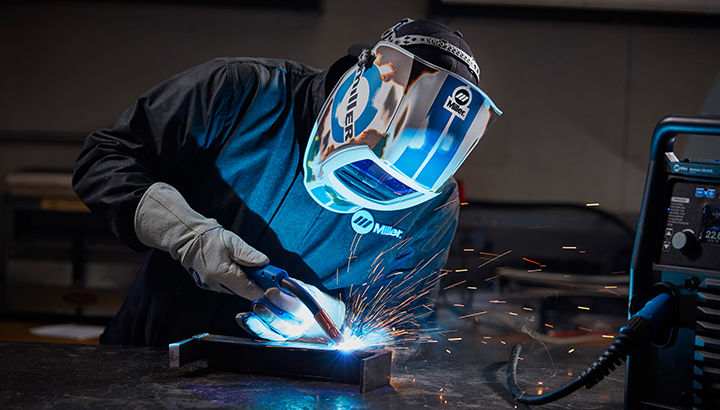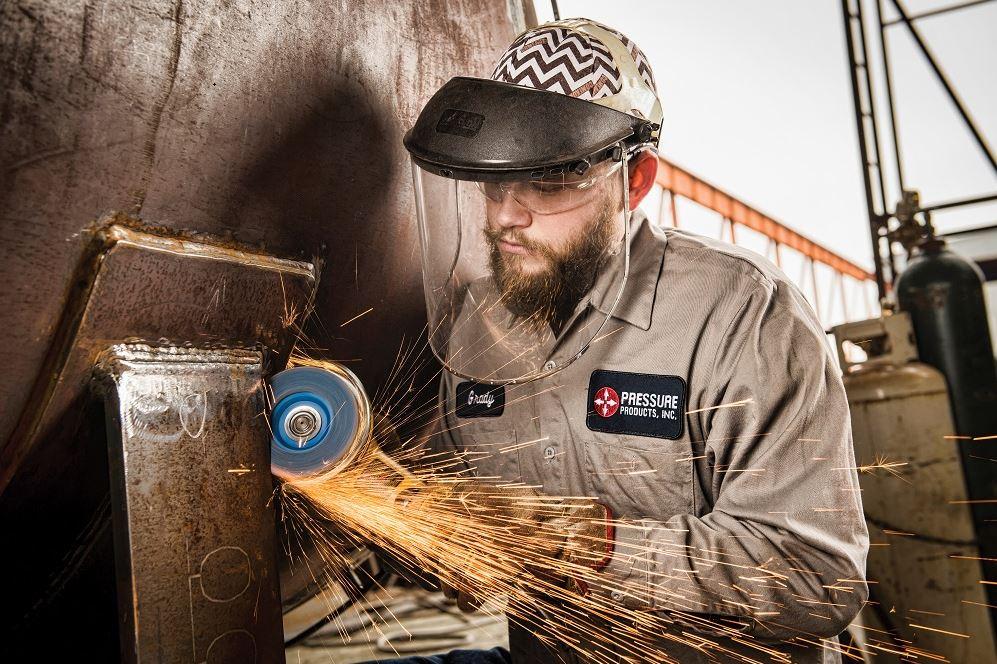Usual Welding Repair Service Issues and How to Address Them Successfully
Welding fixings commonly experience a variety of concerns that can threaten the honesty of the final item. Typical issues include poor infiltration, porosity, and misalignment, to name a few. Each flaw provides distinct obstacles that require specific techniques for resolution. Comprehending these issues is essential for welders intending to boost their end results and abilities. This discussion will explore these typical welding fixing concerns and reliable techniques to address them.
Inadequate Infiltration
Inadequate penetration happens when the weld steel stops working to fully fuse with the base material, causing weak joints and potential architectural failings. This problem typically stems from not enough heat input, wrong electrode angle, or inappropriate welding speed. Welders may encounter insufficient infiltration due to a mistake of the required parameters for a specific product thickness or kind. In addition, contamination on the base material's surface can hinder efficient bonding, exacerbating the trouble. To deal with poor infiltration, welders ought to assure proper setups on their devices and keep a tidy job surface. Normal assessment of welds is advised to determine any shortages early, enabling timely improvements and the prevention of endangered structural stability in bonded assemblies.
Porosity
Porosity is an usual problem in bonded joints that shows up as little gas bubbles caught within the weld metal. This issue can endanger the stability of the weld, leading to reduced stamina and prospective failure under stress and anxiety. Belgrade Welding. Porosity generally emerges from contamination, wetness, or inappropriate welding strategies, which permit gases to run away right into the liquified weld pool. To deal with porosity, welders ought to guarantee appropriate surface prep work, maintain a tidy functioning atmosphere, and utilize appropriate welding specifications. Furthermore, choosing the appropriate filler product and securing gas can alleviate gas entrapment. Normal examination and screening of welds can help recognize porosity early, assuring prompt rehabilitative activities are taken, thus preserving the quality and dependability of the bonded framework
Imbalance
Misalignment in welding can occur from various factors, including inappropriate arrangement and thermal expansion. Understanding the root triggers is crucial for efficient resolution. A number of modification techniques are offered to realign elements and guarantee architectural integrity.
Sources of Misalignment
Welding imbalance commonly stems from a selection of underlying concerns that can jeopardize structural integrity. One main reason is incorrect fit-up of parts prior to welding, which can result in spaces and irregular surface areas. Variants in thermal expansion throughout the welding process can likewise cause distortion, specifically if the materials being signed up with have different coefficients of expansion. In addition, inadequate fixturing and securing may fail to hold elements firmly in position, leading to movement throughout welding. Inadequately kept equipment, including welding equipments and devices, may introduce incongruities in the weld bead, more adding to imbalance. Driver mistake, stemming from not enough training or experience, can likewise play a substantial function in producing misaligned welds.

Modification Techniques Readily Available
Dealing with imbalance effectively requires a combination of restorative methods customized to the certain concerns at hand. One usual approach is the use of jigs or fixtures to hold elements in the right setting during welding, ensuring regular positioning. Additionally, preheating the materials can help in reducing distortion and improve fit-up. For significant misalignment, mechanical adjustment methods, such as utilizing hydraulic jacks or clamps, can be employed to correct the position prior to welding. Post-weld warm treatment might also be needed to relieve tensions caused by imbalance. Careful evaluation and change throughout the arrangement phase can protect against misalignment concerns from ending up being significant problems, advertising a smoother welding process and enhancing total structural integrity.
Distortion
Distortion is a common challenge in welding that can occur from various variables, consisting of irregular home heating and air conditioning. Comprehending the root causes of distortion is crucial for executing reliable prevention methods. Resolving this concern not just enhances architectural honesty but also improves the general top quality of the weld.
Sources of Distortion
When based on the intense warmth of welding, products typically undertake modifications that can lead to distortion. This phenomenon largely arises from thermal expansion and contraction during the welding procedure. As the weld area heats up, the material expands; upon cooling, it contracts, which can produce inner stresses. Additionally, uneven home heating throughout a work surface can worsen these anxieties, leading to warping or bending. The sort of product likewise plays a considerable function; metals with differing thermal conductivity and coefficients of growth may react in different ways, leading to unpredictable distortions. Poor joint layout and poor fixturing can add to misalignment during welding, boosting the likelihood of distortion. Comprehending these causes is vital for effective welding repair and avoidance methods.
Avoidance Techniques
Efficient avoidance techniques for distortion throughout welding emphasis on controlling heat input and guaranteeing appropriate joint design. Maintaining a constant heat input helps to decrease thermal growth and tightening, which can lead to distortion. Utilizing methods such as preheating the workpiece can likewise lower the temperature gradient, advertising uniform home heating. Furthermore, selecting proper joint styles, such as T-joints or lap joints, can boost security and decrease stress focus. Applying appropriate fixturing to protect the workpieces in position additionally aids in preserving positioning during the welding procedure. Lastly, staggered welding series can distribute heat more evenly, protecting against localized distortion. By using these methods, welders can significantly lower the possibility of distortion and enhance the overall top quality of their welds.
Splitting
Cracking is a common concern come across in welding fixings, commonly resulting from numerous aspects such as inappropriate cooling rates, material selection, or inadequate joint preparation. The occurrence of cracks can considerably endanger the honesty of the weld, leading to possible failings during operation. To resolve this issue, welders have to initially assess the root triggers, making sure that products are suitable and suitably picked for the check certain application. In addition, managing the cooling rate during the welding procedure is crucial; quick cooling can induce tension and cause splitting. Proper joint design and preparation additionally contribute to decreasing the threat. Executing these techniques can improve weld high quality and toughness, inevitably minimizing the probability of splitting in ended up weldments.

Insufficient Combination
A substantial problem in welding repairs is insufficient fusion, which takes place when the weld metal does not appropriately bond with the base material or previous weld passes - Belgrade. This problem can cause weaknesses in the joint, possibly endangering the stability of twi welding the bonded structure. Elements adding to insufficient fusion include inadequate warmth input, improper welding strategy, and contamination of the surface areas being joined. To address this issue effectively, welders must assure appropriate pre-weld cleansing and surface area preparation, as well as change their welding criteria to attain adequate penetration and combination. Routine examination during the welding process can also assist determine insufficient combination early, allowing for prompt rehabilitative measures to improve the general high quality of the weld
Overheating
While welding repair services can boost structural integrity, overheating presents a considerable difficulty that can cause product destruction. Too much warmth throughout welding can change the mechanical buildings of steels, resulting in lowered strength, boosted brittleness, and bending. This phenomenon is especially vital in high-stress applications where structural integrity is extremely important. Recognizing overheating can include aesthetic examinations for staining or distortion, along with checking temperature level during the welding procedure. To minimize the threats linked with getting too hot, welders need to use appropriate methods, such as controlling heat input, readjusting travel rate, and making use of suitable filler materials. Furthermore, executing pre- and post-weld warm treatments can assist bring back product residential or commercial properties and boost the general quality of the repair work, guaranteeing long-lasting performance and safety and security.
Often Asked Concerns
What Are the Typical Indicators of a Welding Problem?

How Can I Examine My Welds for High quality?
To evaluate welds for top quality, one can utilize visual assessments, ultrasonic screening, and radiographic techniques. Each strategy guarantees architectural integrity, identifies problems, and verifies adherence to defined criteria, inevitably enhancing the dependability of the bonded joints.
What Safety Safety Measures Should I Take While Welding?
When welding, one ought to focus on security by wearing ideal personal safety devices, ensuring correct ventilation, safeguarding my latest blog post combustible materials away, maintaining a clean office, and knowing environments to avoid accidents and injuries.
Can I Repair a Weld Without Redoing the Entire Joint?
Repairing a weld without remodeling the entire joint is possible, depending upon the damages (Montana Mobile Welding and Repair Belgrade Welding). Methods such as grinding, adding filler product, or making use of a welding process can successfully address specific problems while protecting the surrounding structure
What Tools Are Necessary for Efficient Welding Repairs?
Vital devices for efficient welding repair services consist of a welding machine, cord brush, grinder, safety gear, clamps, and filler products. Each device plays a crucial duty in making certain high quality and security during the repair service procedure. Porosity commonly occurs from contamination, wetness, or inappropriate welding strategies, which permit gases to run away into the liquified weld pool. Improperly conserved tools, including welding machines and tools, may present incongruities in the weld grain, more contributing to imbalance. When subjected to the intense warmth of welding, materials usually undertake adjustments that can lead to distortion. Fracturing is an usual problem run into in welding repair work, often resulting from numerous variables such as incorrect air conditioning rates, material selection, or insufficient joint prep work. A significant concern in welding repairs is insufficient fusion, which occurs when the weld steel does not sufficiently bond with the base product or previous weld passes.